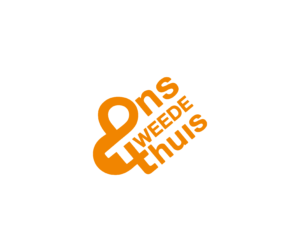People with acquired brain injury (ABI) and light intellectual disability may need a good day structure for various reasons. Keeping the overview and a proper balance throughout the day helps reduce unnecessary stimuli while increasing their sense of control. Stichting Ons Tweede Thuis (OTT) has been deploying healthcare technology for a while to support their clients in this regard, such as robot Tessa or the DayClock. Nevertheless, the need for other forms of support persisted among both employees and clients. And with the advent of the corona pandemic, the need for social companionship emerged as well. “During an inspiration session about the deployment of healthcare innovation, we got to know care robot Maatje. Based on our experiences and those of other healthcare locations, our interest was triggered”, says Martine Evers, innovation officer at OTT. Robot Maatje can help people with a light intellectual disability or forgetfulness in their everyday activities. Maatje will signal when someone should be getting dressed, when it is time to take one’s medication, when it is time for dinner or do some physical exercises. Robot Maatje offers users companionship in addition to practical everyday structure.

Implementation
In addition to social isolation, Covid-19 also provided a financial incentive to launch Maatje. Evers: “Budgets for new technologies are tight. But for Maatje, we were eligible for the SET COVID-19 subsidy that offered the financial space we needed. And when a survey among our employees revealed a lot of interest in care robot Maatje, we set everything in motion. With the continuous support of a subsidy advisor.
When we kicked off early 2021, the innovation team at OTT drafted an implementation plan for care robot Maatje. The plan was inspired by the ‘Sensible experimentation’ method by Vilans. The method involves a brief experiment to explore how a technology can impact your location or client. Evers: “In this period, we used the lessons from the SET-up support programme and our prior experience with robots within the organisation, among other things. We deliberately took a lot of time for the preparation phase. As a result, we were well-prepared for the technological and organisational requirements of the robot by the time we proceeded to implement.” However, drafting and elaborating an implementation plan was just the beginning. ‘In the initial phase, we paid a huge amount of attention to generating support and ambassadors for the new technology within the organisation. By conducting inspiration sessions for employees and clients. And to those who were interested, we offered extra deepening sessions to prepare them for the robot and their role in this phase. Because we preferred to start with people who really wanted it”, says Evers. Options were explored for involving semi-scientific research by conducting measurements before, between and after implementation with official questionnaires. In addition, communication about the project was ramped up.
In April 2021, ten Maatjes were deployed at OTT. The first ten interested clients experimented with the robot for three months. Evers: “The kick-off was approached as a festive moment. That was a conscious decision.” To make things as simple and user-friendly for the users, a toolkit – a type of FAQ – was developed. In addition, the innovation team was approachable and users were closely supervised in the first phase. “We are now seeing OTT employees experimenting with the possibilities of using Maatje for other tasks or with other client groups where the robot could be of added value. As far as we’re concerned, that makes it a success already”, says Evers. Clients are also very optimistic during the four-weekly assessments. Evers: “But we also see that for some clients, care robot Maatje doesn’t work. In these cases, we explore the possibilities to do things differently which provides us with a wealth of additional information. In some cases we were able to address the need for help by deploying another technology, such as Robot Tessa or a smartwatch. Care robot Maatje works better for some than for others but will always be a part of our toolbox.”
The future
The pilot will be completed in December 2021, followed by a large assessment. OTT intends to do whatever they can to prevent the robots from ending up in the cupboard. “We are now focussing on a select group of extramural clients. But plenty of scaling and broadening opportunities remain among our clients and staff population”, says Evers. It will always be a matter of customisation and iteration. For example, it proved quite difficult to include the client’s network, an important factor, when it comes to deploying the robot. “OTT wants to keep progressing the deployment of care technology. With great attention to the digital skills of our staff and clients while obtaining structural funding to create the necessary capabilities. The subsidy was a great stepping stone but we need to keep doing this in the future.” It is remarkable to see what someone experiences when in contact with a robot and how much support it can give, by being a companion at times when you are on your own.

